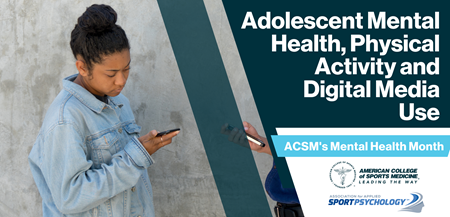Elina Engberg, Ph.D. |
May
10, 2022
 The majority of adolescents aged 11–17 years are insufficiently physically active globally, with differences found across sexes and countries. In addition, time spent using digital media, a common sedentary behavior, has increased and sleep duration has decreased among youth in recent decades. Simultaneously, the prevalence of depressive and anxiety disorders has increased among adolescents in many countries.
The majority of adolescents aged 11–17 years are insufficiently physically active globally, with differences found across sexes and countries. In addition, time spent using digital media, a common sedentary behavior, has increased and sleep duration has decreased among youth in recent decades. Simultaneously, the prevalence of depressive and anxiety disorders has increased among adolescents in many countries.
Achieving higher levels of physical activity, lower levels of sedentary behavior, better sleep quality, adequate sleep duration and shorter sleep latency associate with better mental health and wellbeing among adolescents. Cross-sectional studies often assume movement behaviors represent the causal factor, that is, they affect mental health. However, the association may also be reverse; adolescents with poorer mental health may be less likely to engage in favorable behaviors. For example, a study by Gunnell et al. examined bidirectional relationships between physical activity, screen time and symptoms of anxiety and depression over time during adolescence. They found that greater initial symptoms of depression predicted greater decreases in physical activity, but no other relationship between physical activity, screen time and anxiety or depression were detected.
Despite widespread public attention to the assumed negative consequences of digital media use on mental health, existing research evidence among young people is primarily cross-sectional. In addition, many existing studies do not differentiate between different types of digital use, such as between active use (participatory media use, e.g., chatting, messaging and liking) and passive use (media consumption, e.g., viewing programs), although different types of digital media use may be differentially associated with mental health, and recent studies have questioned the use of total screen time.
Research on movement behaviors, including physical activity, sedentary behavior and sleep, has traditionally concentrated on examining individual behaviors and their associations with health. Current research, however, is moving towards identifying different combinations of these behaviors, which may have important implications for health already during childhood or adolescence. A person-oriented approach seeks to identify unique latent groups within a population, and focuses on profiles across characteristics to describe a certain phenomenon. Recent studies using this approach in movement behavior research have identified several distinct profiles or patterns indicated by sedentary behavior and physical activity among children and adolescents.
The relationship between different combinations of movement behaviors and mental wellbeing among youth remains relatively unstudied until recently. In their two recent studies, Brown et al. identified four distinct movement behavior profiles among adolescents and observed that a profile characterized by high amounts of physical activity and low amounts of digital media use was consistently associated with the highest levels of current mental wellbeing and with lowest depressive symptoms, both currently and one year later. Further, Brown and Kwan showed that replacing 60 minutes of screen time with either moderate-to-vigorous physical activity or sleep associated with better self-esteem and resiliency among adolescents.
In our very recent longitudinal study, we first wanted to examine behavior profiles indicated by leisure-time physical activity and different types of digital media use (active and passive use, gaming and bedtime delay because of digital media use) among 1,500 15-year-old Finnish adolescents. We identified four different behavior profiles. About 30% of adolescents belonged to the “healthiest” behavior profile characterized by moderate digital media use and high physical activity, whereas 23% belonged to the “unhealthiest” behavior profile characterized by high passive digital media use and gaming with low physical activity. Secondly, we wanted to examine whether mental health indicators assessed at 11 years of age predicted belonging to these behavior profiles four years later. After taking into account confounding factors, such as physical activity and digital media use at 11 years of age, symptoms of depression or anxiety did not associate with later behavior profiles. However, higher amount of physical activity and better perception of athletic competence among the 11-year-olds predicted belonging to any other profile than to the “unhealthiest” profile characterized by high passive digital media use and gaming and low physical activity.
Our results suggest that physical activity and related self-esteem may be stronger predictors of future physical activity and digital media use behavior during adolescence than mental health symptoms alone. At present, relatively little is still known about how digital media use, physical activity and sleep behaviors interact among adolescents, or how the interplay of these behaviors and mental health relate with each other over time. Hopefully this area of research will receive further attention to deepen our understanding on the direction of the relationship between movement behaviors and mental health among children and adolescents.
More Mental Health Research & Resources
 Elina Engberg, Ph.D., is a postdoctoral researcher and project leader of the SUNRISE Finland Study. She is a member of ACSM's Psychobiology and Behavior Special Interest Group.
Elina Engberg, Ph.D., is a postdoctoral researcher and project leader of the SUNRISE Finland Study. She is a member of ACSM's Psychobiology and Behavior Special Interest Group.